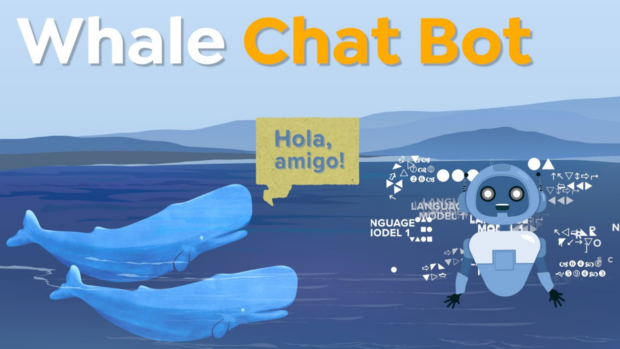How to Talk to Whales: The Role of Artificial Intelligence
Have you ever wondered what it would be like to communicate with whales? Perhaps you envision yourself speaking in slow, low, and guttural tones, similar to Dory from the movie “Finding Nemo.” While this may be a fun fantasy, scientists have made significant strides in using artificial intelligence (AI) to understand and translate whale sounds.
Believe it or not, researchers have drawn inspiration from the Search for Extraterrestrial Intelligence Project (SETI) in their quest to communicate with whales. Much like we desire to connect with alien lifeforms in the stars, there is still much to learn about the communication methods of the creatures in our own oceans.
So, what sets human language apart from animal communication? Although animals do communicate with each other, scientists have sought to understand the intricacies and complexity of whale communication. Whales, in particular, have developed a unique system of communication, utilizing 2-second clicks called codas. Researchers believe that by matching these whale noises with human language, we may be able to bridge the communication gap.
Enter the Cetacean Translation Initiative (CETI), a groundbreaking project that aims to use AI to create an AI whale translator. This ambitious endeavor involves several steps:
- Deploying buoyed sensor arrays to locate and record whale sounds
- Attaching recording devices to whales to identify who is communicating with whom
- Utilizing aquatic and aerial drones to observe these majestic sea creatures
- Analyzing and matching enormous amounts of data, which will require the use of a large language model like GPT-3
The hope is that AI will enable researchers to understand and communicate with whales, ultimately deepening our understanding of both animal communication and the Animal Kingdom as a whole.
While the concept of an AI whale translator may seem far-fetched, it is worth noting that AI is already playing a significant role in language learning. Take Duolingo, for example, a popular language learning app that utilizes AI to help millions of users understand new languages. Their latest subscription tier, Duolingo Max, uses OpenAI’s LLM, GPT-4, to simulate scenarios that require users to practice using a new language. By immersing users in realistic language situations, AI integration enhances their readiness for real-life conversations.
Google Lens is another well-known application that utilizes AI to translate foreign text seen through a phone camera. These examples show that AI has the potential to revolutionize language learning and cross-cultural communication.
In conclusion, AI is not only helping us bridge the gap between human and animal communication but also enhancing our ability to learn and understand languages. While we may not have an AI whale translator just yet, the groundwork being laid by projects like CETI holds promise for a future where we can communicate with the Animal Kingdom in unprecedented ways.
So, next time you find yourself daydreaming about talking to whales, remember that the realm of possibility is expanding with the help of artificial intelligence.
Denial of responsibility! Vigour Times is an automatic aggregator of Global media. In each content, the hyperlink to the primary source is specified. All trademarks belong to their rightful owners, and all materials to their authors. For any complaint, please reach us at – [email protected]. We will take necessary action within 24 hours.


